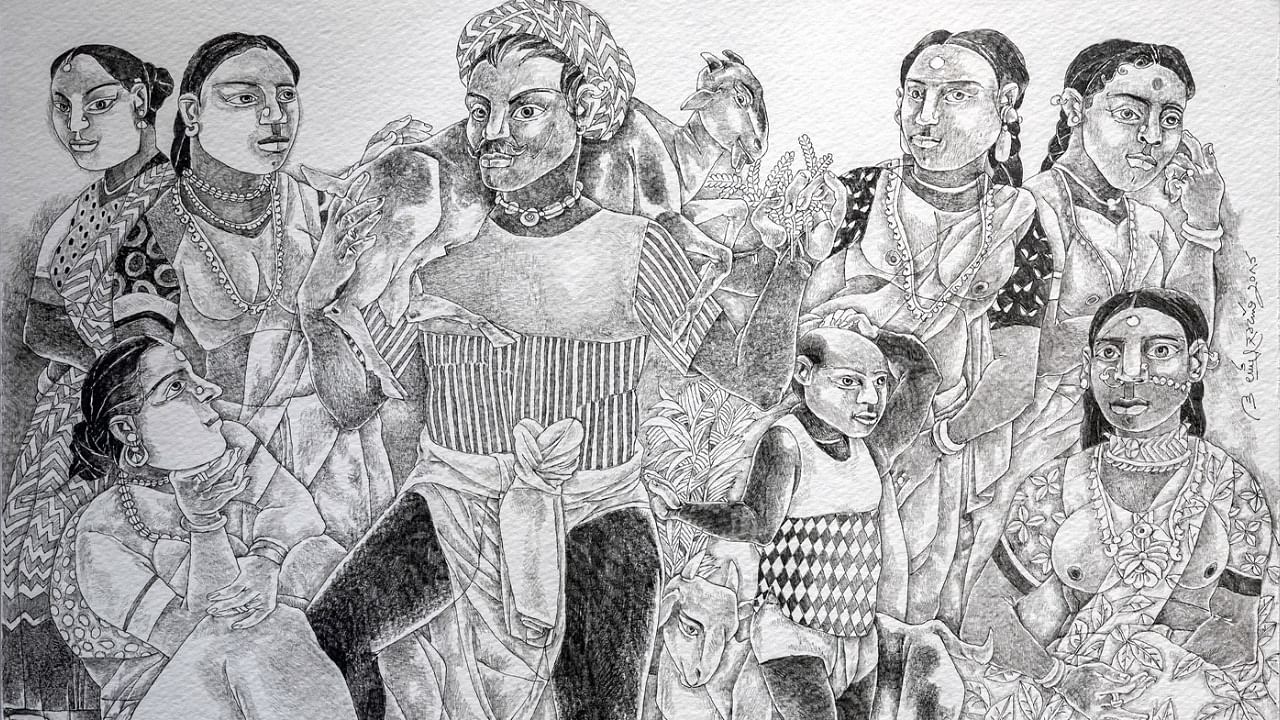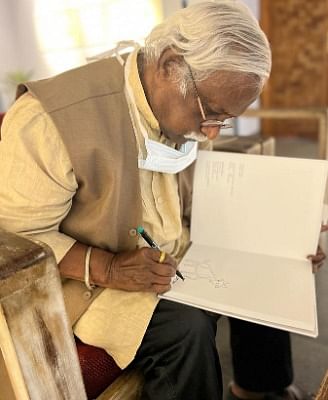

Telangana, as a political-administrative unit of India, is less than a decade old; however, two of its most well-known artists, K. Laxma Goud and Thota Vaikuntam, have long celebrated its robust rural folk.
The two artists celebrate rural Telangana, a glimpse of which is on view at Goud’s ongoing exhibition of works at Gallerie Splash in Gurugram till June 26.
“I cannot forget the men and women around me, the domestic animals and the overall environment where I grew up. It is very dear to me,” the Hyderabad-based Goud told Deccan Herald. “The figures and characters remain similar though there have been slight changes in jewellery and attire worn by them in my artworks. Other than these, there are moderate changes in light of the changes in Telangana,” said the artist born in Nizampur in Andhra Pradesh in 1940.
Billed as his largest exhibition to date, it features 125 drawings and intaglio prints by Goud, the most distinctive feature of which is the absence of colour.
“The idea I am aiming to convey through the artworks is that the distance between black and white has nuances of grey, and it is the combination of all these three colours that creates harmony in the artwork and in life,” he said.
Goud's works evoke the vibrant rural life through strong yet lucid lines, bringing alive the figures and their environment through intricate details. Also present in most of these drawings is the goat, an animal that occurs recurrently in Goud’s art. Above all, the works strongly display the artist’s absolute command over drawing, which he never took leave of, despite experimenting with various media.
“Drawing is a sustainable tool in my creative pursuit; a singular line has umpteen nuances realising my imaginations. Drawing alone has driven me towards a fertile imagination, and drawing is the source of my metamorphosis,” said the artist awarded the Padma Shri in 2016.
Trained in painting and drawing at the Government College of Fine Arts and Architecture, Hyderabad, Goud went on to acquire a post-diploma in mural painting and printmaking from M. S. University, Baroda, 1963-65.
The invigorating environment of the institution instilled in him a sensitivity towards his rural heritage. K. G. Subramanyan, who strode the Baroda art school like a colossus, helped shape Goud’s artistic vocabulary.
Coupled with his subsequent return to Nizampur, the experience helped him evolve a personal style marked by an expression of the ingenuous sexuality of the rural folk, presented in the framework of the simple life of the villages, lush and wild with nature’s bounty. Over the years, the erotic elements of his works lost their edge, as evident in the current exhibition.
“In the early days, my work was not acknowledged because I used to make nude paintings," said Goud. "I was criticised, but it never affected me or my artworks. I remember galleries refused to display my artworks for my style, but I am happy times have changed, and people have become more accepting of my artworks and style.”
Goud is modest in the self-assessment of his work as he is one of the most sought-after modern Indian artists. Having excelled in media as diverse as pen, ink, watercolours, oils on the one hand to bronze and terracotta sculptures on the other, he has made an invaluable contribution to the emergence of a uniquely Indian vocabulary of art.
“I live with the hope that I will do more significant work in the days ahead,” he says.
(The writer is a New Delhi-based journalist, editor and arts consultant. She blogs at www.archanakhareghose.com)